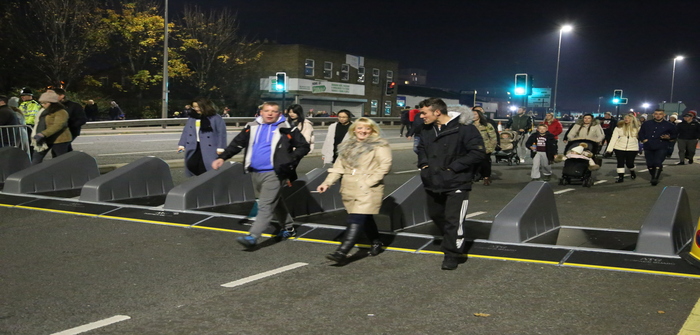More focus must be put on improving security at stadiums and venues to protect attendees and the wider public, says Gavin Hepburn, sales and marketing director, ATG Access
Over the past couple of years, stadiums and tourist attractions across the world have become key targets for terrorist attacks due to the regular heavy footfall in and around the venue. Just last year, we suffered a devastating attack in the UK right on our doorstep at the Manchester Arena.
In November 2015, we saw attacks on a concert venue and the national soccer stadium in Paris, France, and at the end of 2016, a soccer stadium in Istanbul, Turkey, also became the target of an attack.
Following these incidents, security has been severely tightened ahead of major cultural and sporting events. With summer on the horizon we’ll see the Commonwealth Games in Australia; the Grand National horse race in the UK; and the marathons in Boston, Massachusetts, in the USA and in Manchester and London in the UK. At all of these, security must remain at the forefront and measures should be in place to prevent attacks.
When events are about to take place, huge crowds will often gather outside a venue as visitors queue to get in, or when they are waiting for transport to get home once the event has finished, which is an ideal target for destructive terror attacks. Some terrorists are now opting to use vehicles as weapons, rather than planting bombs or using guns or knives, and large vehicles can cause huge amounts of damage in very short space of time.

To protect crowds of people, separating attendees and vehicles is particularly effective. This could be done by closing off pedestrian areas or including temporary road closures. However, these spaces need to be pedestrian permeable to keep exits clear and allow people and crowds to move around freely, especially in an emergency situation. It’s also important to avoid creating a ‘fortress mentality’ so that attendees feel relaxed, rather than worrying about the risk of attack.
An ideal way to effectively secure the perimeter of a stadium or other type of event venue from vehicle attacks would be to install specially designed vehicle mitigation bollards and barriers.
Many hostile vehicle mitigation (HVM) barriers are designed to blend in easily with a location’s surroundings so they don’t cause unnecessary alarm to the public. Advancements have meant that such barriers can now withstand the impact of cars and vans, along with larger vehicles, such as trucks. There are products available that can stop vehicles weighing nearly 3 tons and travelling at 30mph, and some are now even capable of withstanding the impact from vehicles weighing 8 tons and travelling at 20mph.
Importantly, these barriers have been designed to be compact and lightweight, so they can be transported and deployed quickly and easily. There will be no need to close down roads or use heavy machinery, reducing the level of disruption caused to attendees and the public to a minimum. The permeable design also makes it possible for wheelchair users, cyclists and parents with strollers to pass through with ease.
By assessing the level of risk for each venue— examining recent attacks on areas that fit the venue profile—security personnel must consider all aspects of security needed to protect individual venues and help prevent future incidents. We cannot afford to let our guards down.
March 21, 2018





